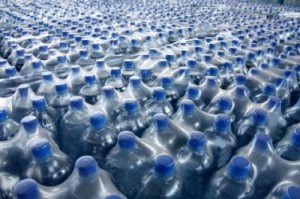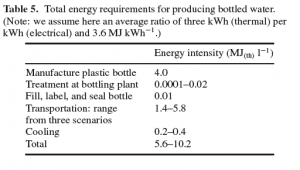Step 2: Plastic Water Bottles are Worse than I Thought
Ditching the habit of only drinking out of plastic water bottles hasn’t been as difficult as I thought it would be. I’ve been pretty good about remembering to bring my reusable water bottle around with me, and have not had any difficulties finding a water fountain to refill the water bottle. When I have been in a big hurry ,however, I’ve forgotten my water bottle a couple times and have had the urge to buy a disposable plastic water bottle. In one instance I did, because I was so thirsty, but the other instance I held off and waited until I found a water fountain to take a drink out of. The latter easily could’ve been done in the first situation, however I found laziness overcame me and I did not look for a near by water fountain. I’ve realized that there really is no excuse to use a plastic water bottle, and I have been very proud in myself for remembering to use my reusable water bottle everyday for the past week except for two times. Not bad for the first week! 
When I chose to stop using plastic water bottles, I only thought about the waste plastic water bottles produce and how the plastic waste is extremely bad for the environment. I found an article that discussed the energy that is required to manufacture plastic water bottles, to process bottled water, to clean, fill, seal, and label plastic water bottles, to transport bottled water, and to cool the bottled water prior to consumption (Gleick and Cooley, 2009). Now that is a lot of energy! The amount of energy used to produce each water bottle depends on numerous variables. First, the size of the water bottle and amount of plastic needed to produce the water bottle effects the amount of energy needed to produce the bottle (Gleick and Cooley, 2009). If it is a large plastic container of water, the plastic will most likely need to be thicker, and therefore need more energy to produce it, versus a smaller thinner water bottle that requires less energy to produce it (Gleick and Cooley, 2009). Furthermore, the amount of energy to process bottle water depends on whether the water is ‘purified’ or ‘spring’ water. ‘Purified’ water takes more energy to process because it is typically municipal water that undergoes numerous sterilization processes, which require more energy than natural ‘spring’ water, that undergoes less sterilization processes (Gleick and Cooley, 2009). The amount of energy required to clean, fill, seal, and label plastic water bottles is considerably less than the amount of energy needed to produce the plastic water bottle itself (Gleick and Cooley, 2009). However, the amount of energy to produce water bottles is cumulative, and this factor definitely cannot be ignored. The amount of energy required to transport water bottles depends on the mode of transportation (i.e. ship, rail, truck), and also the distance of transport (Gleick and Cooley, 2009). The article provides an example of Avian in France, which is produced in France, shipped to Los Angeles by boat, transported nationally by rail, and then locally by truck (Gleick and Cooley, 2009). Clearly this mode of transportation requires much more energy than locally produced spring water in Maine which is shipped regionally by truck (Gleick and Cooley, 2009). Lastly, the amount of energy necessary to cool water bottles from the time they reach stores to the time the consumer drinks it also varies. Less energy is required for a water bottle to be cooled that is consumed the day after it arrives at a store, versus if a consumer keeps the water bottle cooling in their refrigerator for two weeks after purchasing it (Gleick and Cooley, 2009). This article is extremely interesting to me because I learned that producing and maintaining the standard water bottle we purchase in stores requires much more energy than I ever realized. Not only do I believe it is important to stop consuming water bottles because of the waste, but the fact that producing water bottles in the U.S. alone required between 32-54 million barrels of oil (in 2007) is an astonishing number (Gleick and Cooley, 2009). Water bottles are detrimental to our environment because the amount of energy they require to produce them is outrageous and completely unnecessary when we have access to tap water and water fountains.
Reference:
Gleick, P.H., and H.S. Cooley. “Energy Implications of Bottled Water.” Environmental ResearchLetters (4). IOP Publishing, 19 February. 2009. <http://0-iopscience.iop.org.libcat.lafayette.edu/1748-9326/4/1/014009/pdf/1748-9326_4_1_014009.pdf>

Leave a Reply